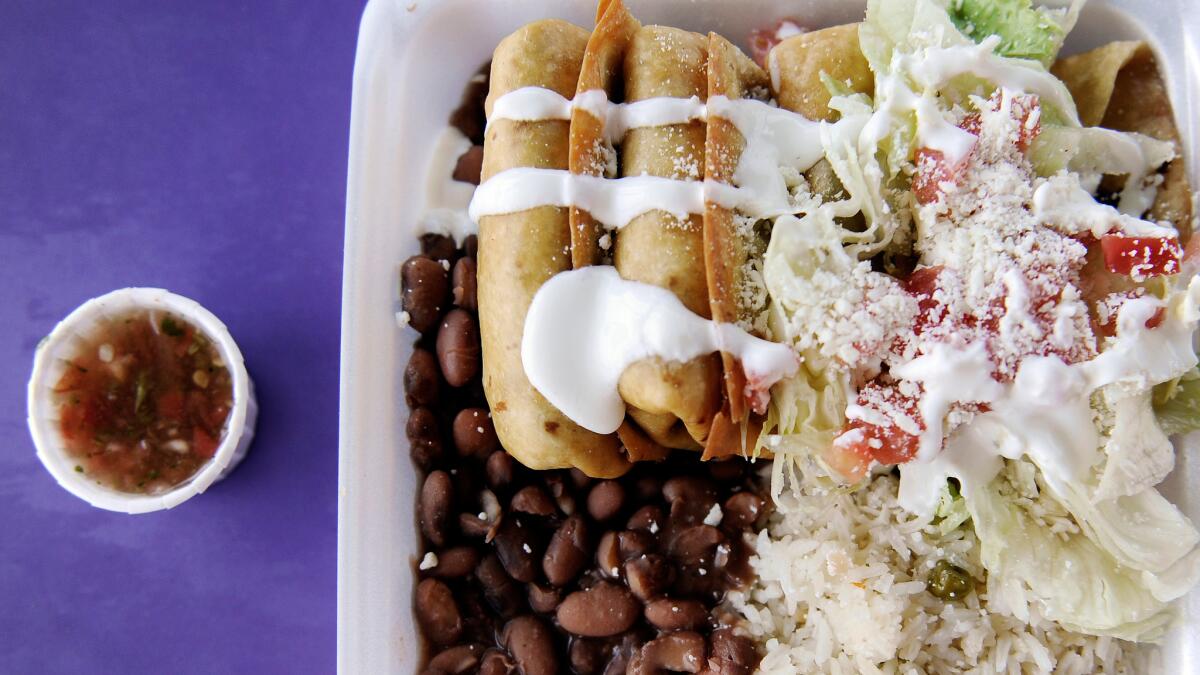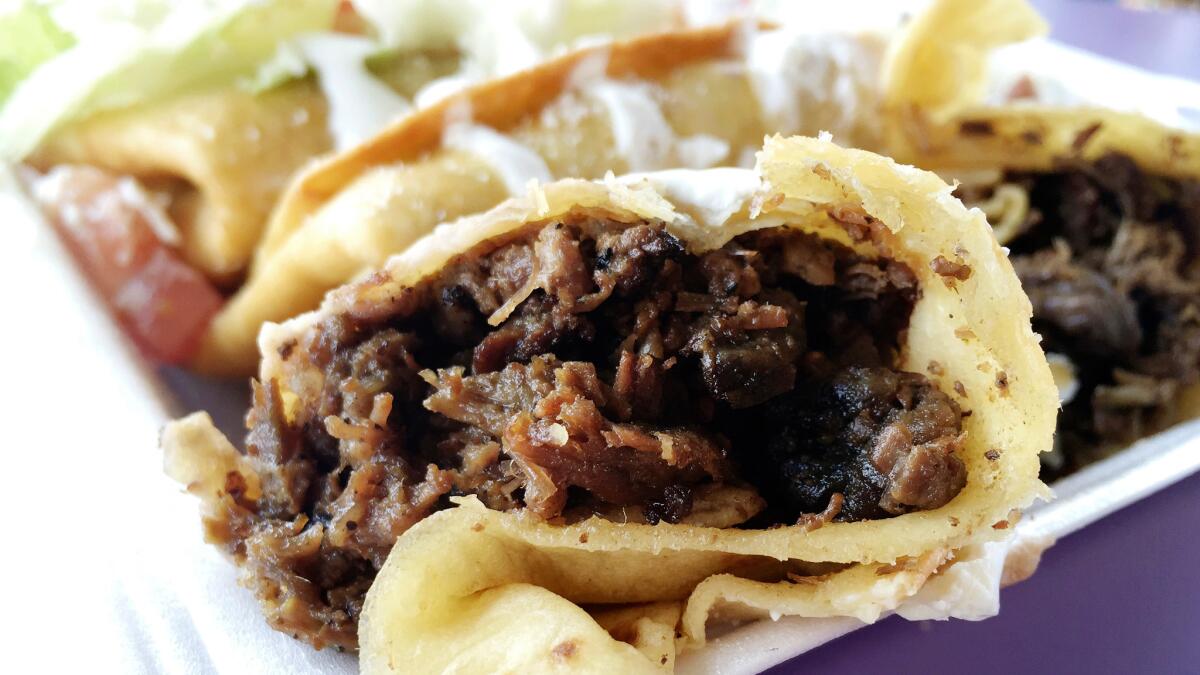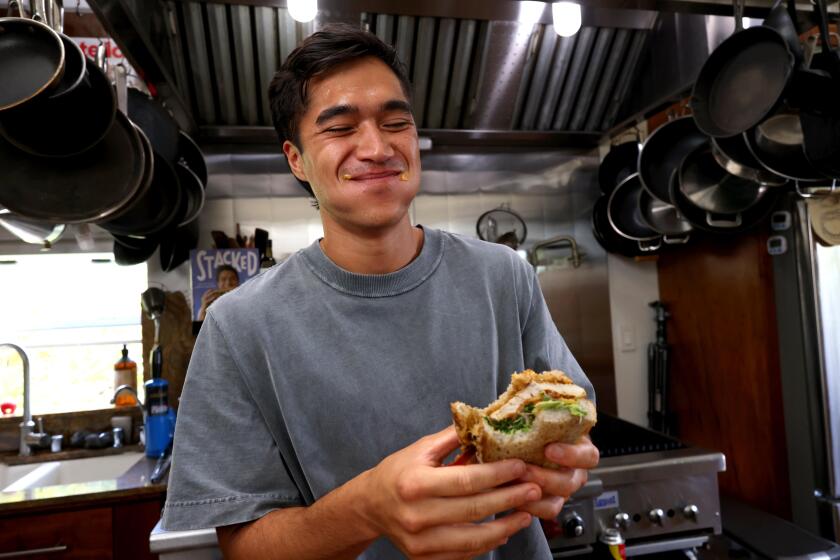Where did the chimichanga, the glorious deep-fried burrito, come from anyway?

Recently, UNESCO designated Tucson as a “capital of gastronomy,” naturally inspiring articles on the Arizona city’s long food heritage, as well as local chefs’ use of ingredients from the Sonoran Desert like amaranth, cactus pads, tepary beans and cholla buds, a superfood of de-spined, dried cactus flowers that end up in salads, escabeche and as pickled garnishes in cocktails. Noticeably absent from the Tucson Pride talking points, however, was the chimichanga, which is not a locally sourced ingredient but certainly a regional star: a deep-fried burrito stuffed with steak, chicken or what-have-you. By most accounts, the chimi was invented in Tucson and is no less integral a part of the city’s fabric.
Exactly where it was created and by whom resembles the decades-old Los Angeles war between Cole’s and Philippe The Original over who first came up with the French dip sandwich. As for the chimi’s origins, there are multiple tales, each emphatically told as truth, and some of which even creep beyond Tucson’s city limits and into other parts of Arizona.

There’s a chimi creation myth that starts at the city’s Club 21, another that stars a place called Micha’s. Then there’s Woody Johnson, owner of Macayo’s in Phoenix, who always maintained that his culinary light bulb went off when he wanted to repurpose a batch of day-old burritos and decided that frying them was a great way to go.
But the woman often regarded as the chief architect of the modern chimichanga is Monica Flin, a madcap fortysomething who owned and lived at El Charro Café, a restaurant in downtown Tucson. The origin story that Flin’s great-grand-niece Carlotta Flores grew up on involved Flin sometime in the late 1940s or early ’50s whipping up a midnight snack in the kitchen, when one of the many nieces she was babysitting bumped into her, thus dislodging the bean burrito she was holding.
“It flew up in the air and ended up in the vat of hot oil,” says Flores, the current owner of El Charro. To protect the ears of her young, pajama-clad charges, the story goes, Tía Monica censored her own frustration and instead of barking out a well-known expletive in Spanish, she “twisted it around so the word came out ‘chimichanga.’ ” Some say the “changa” part — which means female monkey — was in honor of the six rascally nieces who witnessed the accidental dawn of what became El Charro’s signature dish. Others say “chimichanga” is a nonsense word like “thingamabob.”
The way that Flores brushes off the competing claims, though, is that the dates back up El Charro’s bragging rights. “Our restaurant was founded in 1922,” says Flores. “I’m not saying other people didn’t serve some form of [fried burrito]. But don’t they say that the greatest flattery is a recipe that’s been changed up a bit and made their own?”
The Flores family has a lot to be flattered by, then, when it comes to the endless varieties of the chimichanga, an obsession of the comic book antihero Deadpool, and now so popularized that they can be found in the frozen food aisle at your local supermarket and next to the Doritos Loaded in the grab-and-go section at 7-Eleven convenience stores.

You can find chimichangas in Highland Park at My Taco and at La Taquiza Mexican Grill in South L.A.; there’s even a chimi on the menu at Gloria’s in Culver City, though the restaurant specializes mostly in comida salvadoreña. At Tacos Por Favor, a family-style restaurant in Santa Monica, ordering a chimichanga is asking for a burrito heart-stopper – its crispy-fried shell holding a heavy package of meat, rice, beans and cheese. And near a noisy, not-yet-gentrified corner in East Hollywood next to a Metro stop is the 24/7-operating El Gran Burrito, where more manageably sized chimis come three to an order and are filled with al pastor, carnitas, carne asada, lengua, cabeza or chicken.
What’s served at the small taco counter Sonoratown, on 8th Street in downtown L.A., is daintier and perhaps more reminiscent of owner Teodoro Diaz-Rodriguez’s upbringing in San Luis Río Colorado, Mexico: It’s a rolled flour tortilla about the size of a woman’s palm that’s been filled with shredded chicken, cheese, roasted tomatoes and Anaheim chiles. Diaz-Rodriguez and co-owner Jen Feltham list it on the menu as a “chivichanga,” what chimis are sometimes called in Mexico. (“It means that it has goat in it,” insists Flores, pointing out that “chivo” means goat in Spanish. But let’s not quibble.) Sonoratown’s isn’t fried, but sautéed in a cast iron skillet and then toasted on a mesquite grill.
Not minding that chefs have put their own stamp on her aunt’s oops-a-daisy brainstorm doesn’t mean Flores can’t rattle off reasons why El Charro’s chimichangas are a time-honored classic. There’s the fact that they’re deep-fried in oil until they’re as crispy and golden on the outside as a Chinese egg roll. Whatever goes inside the chimichanga — and there are at least 10 or so possibilities at El Charro — should be hot. “Otherwise, when you go to bite in the middle, something’s going to be cold,” Flores says, adding that chimis found in Los Angeles often contain too many ingredients.
“When you order a chimichanga in Arizona, there’s just the very basic component of meat that you’ve ordered inside and sometimes beans. I think it tastes better – first, you get the crunch value, then the flavor of what’s inside.”
Of course, the cornerstone of any great chimichanga is a handmade Sonoran-style flour tortilla, once a rare sight in Los Angeles. The closest thing in our city to the thin, stretchy flour tortillas so ubiquitous in southwestern Arizona is at Burritos La Palma, which has a brick-and-mortar outpost in El Monte and shows up every Sunday at the outdoor food market Smorgasburg in downtown L.A. Regrettably, chimichangas aren’t on its bare-bones menu, which offers a selection of willowy burritos of bean and cheese, beef birria, chicken tinga, chicharrón or shredded beef. But they’re so tightly rolled that they’re practically begging to be taken home, fried in hot oil and eaten with a fiery salsa. One bite, and the spirit of Tía Monica will have you forming new words.
More to Read
Eat your way across L.A.
Get our weekly Tasting Notes newsletter for reviews, news and more.
You may occasionally receive promotional content from the Los Angeles Times.








